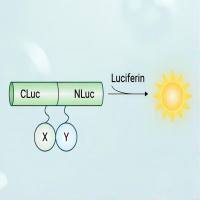Initially developed for the construction of DNA chips, the polypyrrole approach has been extended to other biochemical compounds (mainly proteins and oligosaccharides). This method allows one to copolymerize a pyrrole monomer with a biomolecule bearing a pyrrole group; this reaction is based on an electrochemical process allowing a very fast coupling of the biomolecule (probe) to a gold layer used as a working electrode. Fluorescence-based detection processes are classically used for evidence biorecognition on biochips; in order to avoid the labeling of the targets, we propose an alternative method—surface plasmon resonance imaging (SPRi).
Surface plasmon resonance (SPR) is a typical label-free method for real-time detection of the binding of biological molecules onto functionalized surfaces. This surface-sensitive optical method is based upon evanescent wave sensing on a thin metal layer. The SPR approach described herein is performed in an imaging geometry that allows simultaneous monitoring of biorecognition reactions occurring on an array of immobilized probes (chip). In a SPRi experiment, local changes in reflectivity are recorded with a charge-coupled device (CCD) camera and are exploited to monitor up to 100 different biological reactions occurring on the molecules linked to the polypyrrole matrix. This method will be applied to protein recognition.






